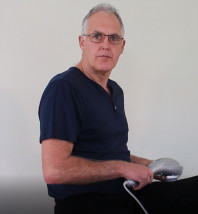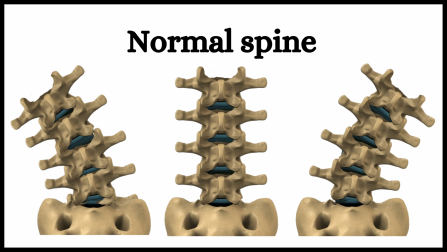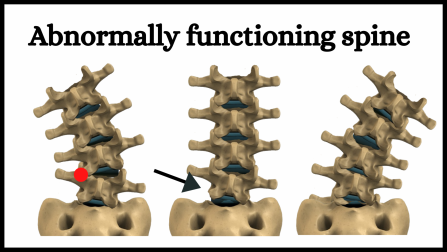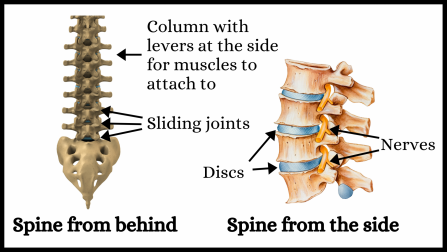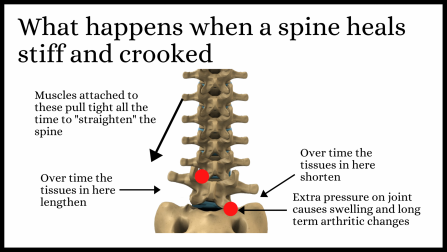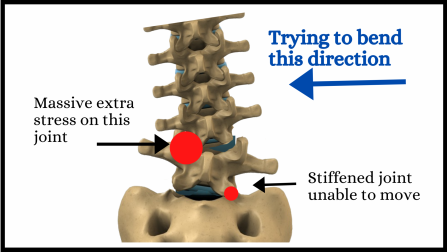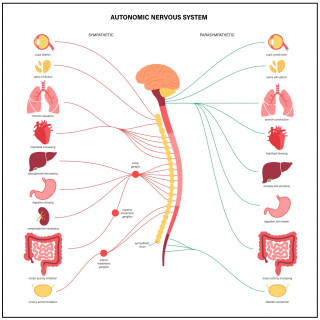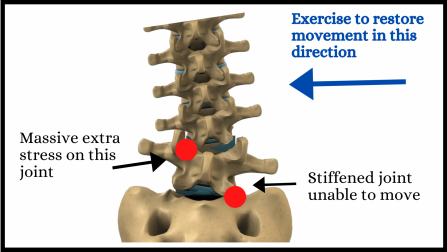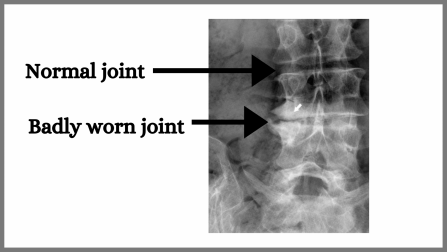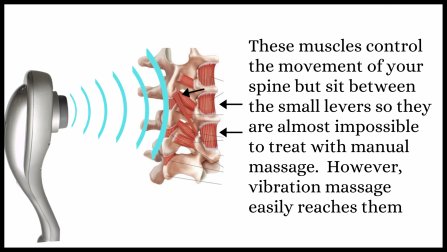How adjustments help correct spines
What the adjustment does
That said, lets have a look at what a chiropractic adjustment is and how they can be used to correct these problems.
First, we’ve see that if you just try and bend the spine it will only bend at the freely moving joints, not the stiffened ones. Chiropractic adjustments are a very accurate and specific force that helps restore the movement in the stiffened joints, while not affecting the others. As a bit of background the diagrams I’ve used are pretty simple but actual spines are very complex pieces of machinery that move in many different directions, and as we’ve seen you can have a badly over stressed part right next to a stiffened part, and the last thing you want to do is force an over stressed joint to move even more.
Because of that it takes a huge amount of training, skills and practice to deliver an accurate chiropractic adjustment. Because of this some chiropractors are better than others, but you need to be aware that not all clicks in the spine are adjustments. Any backyarder or lesser trained therapist can put some tension in a spine and make it go snap crackle and pop, but what what’s making the pop is usually the freely moving joints that are often already moving too far. It’s the same sound and basically the same movement, but without the proper analysis and specificity, instead of a good thing we get a very bad thing.
In saying that chiropractors are the main ones that do adjustments, but there are a lot of osteopaths and some therapists with specialist post graduate qualification that have learned the skills. They’ll just have a different name for it.
Using an adjustment to correct spines
That’s how we restore the movement, so how do we make it last. There’s no short cut. Your spine, including those muscles and ligaments that had shortened and lengthened need to re-adapt over time. The same professionals who’ve studied the spinal mechanics and adjustment have also learned this, so let them manage it. However, I’ll give you an overview here.
Just say we’ve got a stiffened joint that normally moves 10 degrees. An adjustment might get it to move one degree. Now we’ve seen before that if we’ve got a stiffened joint that can only move one degree and we do exercises trying to make it move the full 10 we’ll cause a lot of problems. Instead, we use exercises designed to repeatedly use that one degree movement so your spine starts to adapt. We can then do another adjustment so now we have 2 degrees movement, and use exercises designed to those 2 degrees. If we keep going like this the movement of the stiffened joint will gradually increase, while at the same time the tissues around it will adapt and strengthen.
Other things that can be used to help
So, that’s the simple explanation. As I said it really needs a qualified professional to work out and manage the process, but what while do is finish off with some of the things that he or she might used to help the process along.
Rest, medications and surgery
The first is rest and medications. Is discussed these these never correct anything and can just mask the problem, allowing more damage to occur. However, if your spine is very inflamed they may be used to temporarily to help settle it down in order to allow correction to begin. Also, if there’s a catastrophic failure such as a ruptured disc pressing hard on a nerve you may need surgery, but as mentioned before we don’t want to replace the tyre but leave the bad wheel alignment.
Massage
The extra that’s usually very useful is massage. Over time muscles that are abnormally tight and have their blood flow reduced will deteriorate, and develop lumps called trigger points. Massage is extremely useful to stimulate blood flow and help these recover.
What usually happens though is because of time and cost factors people rarely get all they need. That’s why I had our massagers built. Using these with the appropriate advice patients can have practically unlimited professional standard massage at home. I’ll pop links about these and the muscular problems they help with in the description.
